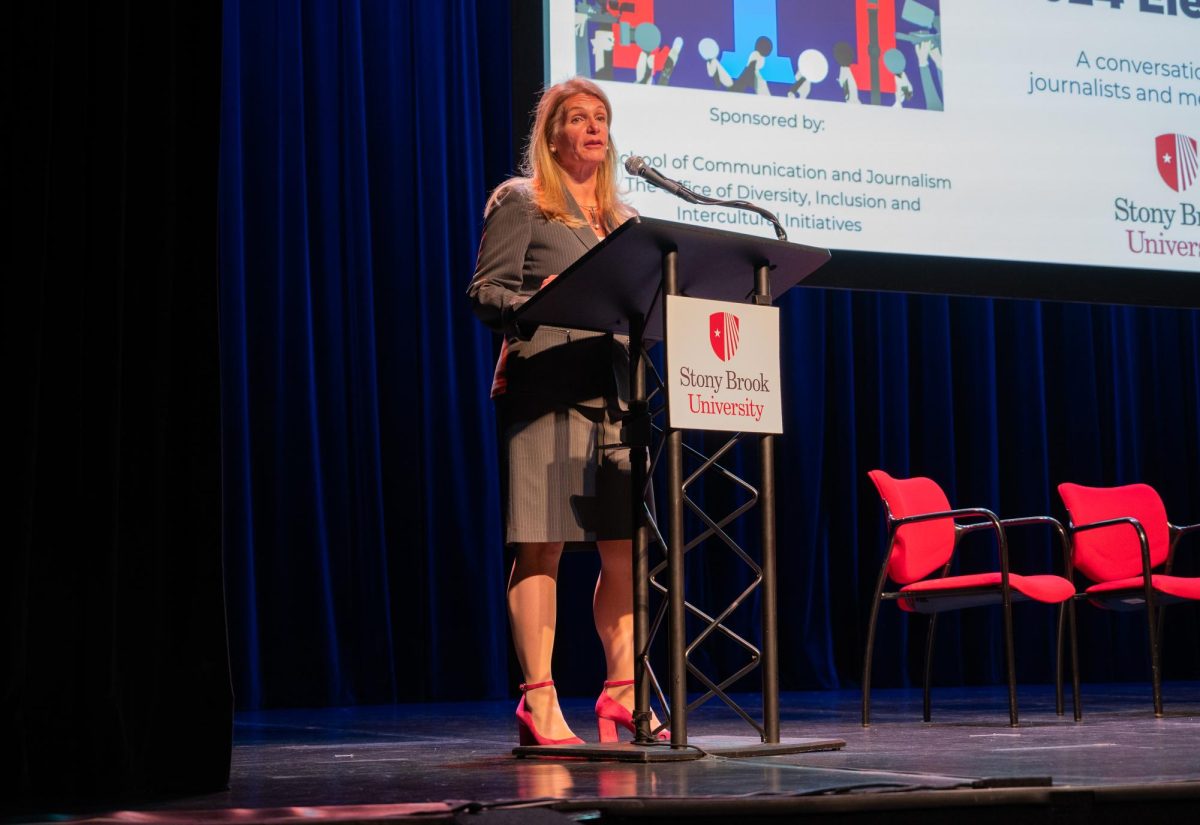
Power, race, rape and the carceral system are the pillars of Stony Brook Associate Professor Robert Chase’s new book, “We Are Not Slaves: State Violence, Coerced Labor, and Prisoners’ Rights in Postwar America.”
The 523-page book, which he promoted at a faculty book presentation on Wednesday, provides an eye-opening look into the endemic exploitation, degradation and abuse of the 2.3 million people who make up America’s prison population — the largest in the world.
According to Chase, the United States has effectively enslaved incarcerated people for decades. Every day, thousands of prisoners across the nation labor for big companies to produce daily commodities, ranging from Starbucks cups to microchips.
They are paid a pittance — 93 cents a day for their efforts. Eighty-five percent is taken by the prison for their room and board. Their work fuels a $2 billion prison-industrial complex that runs largely unnoticed by the American public.
This treatment dates back to the 19th century, when prisoners would work in chain gangs 10 hours a day, six days a week to build roads, dig in mines and pick cotton on plantations. Beatings and lashings from the guards were commonplace. Some prisoners would slice the Achilles tendons of their heels to cripple themselves just so they wouldn’t be able to work.
Unruly prisoners were sent to the “sweatbox,” an isolated, pitch black cell that left them crouched at the mercy of the elements. Many incarcerated in sweatboxes went insane, suffered injuries or even died after being left there for weeks on end.
The nightmare didn’t end when the workday was done. At night, wardens and “trustees,” mostly white prisoners who were given free reign to roam the premises and move prisoners about, would sell the bodies of their often black, latino and gay prisoners to the highest bidder for labor and sex, perpetuating a system of “state-orchestrated prison rape.”
“The prisoners were slaves — that is no metaphor,” Chase said. “Slaves were property, gambled, sold, and traded like common cattle.”
These conditions led to rebellions like the Attica Prison uprising in 1971. 2,200 inmates took over the maximum-security Attica Correctional Facility in New York, taking staff hostage and demanding better living conditions. The riot had a bloody ending, with 29 inmates and 10 hostages killed by police gunfire.
The prisoners would later score a small victory with Ruiz v. Estelle, a drawn out court battle in which David Ruiz and 100 other inmates testified against Texas Department of Corrections Director William Estelle for his chronic mistreatment of the facility’s prisoners. Around 1,500 prisoners engaged in a system-wide strike for about two weeks while the trial proceeded for nearly two years. In 1980, the Texas district court ruled in favor of the plaintiffs, overturning a “hands off doctrine” that prevented inmates from filing complaints against prison conditions. The courts also ordered that no prison go above 95% of its maximum capacity to prevent overcrowding.
Although the prison conditions were declared unconstitutional in eight out of 11 southern states implicated in Ruiz v. Estelle, many facilities rallied against the court rulings or simply ignored them. The prisons cited the 10th Amendment, which gives the states every power not given to the federal government in the Constitution, to justify their actions.
This defiance, along with the effects of Nixon and Reagan’s War on Drugs, tripled the prison population in the United States between 1994 and 2000. Activists who rallied against the system, which disproportionately targets minorities, have been assassinated by members of the Aryan Brotherhood and the Ku Klux Klan.
Dr. Zebulon Miletsky, an Assistant Professor of Africana Studies and History who attended the lecture, said he was fascinated by the book.
“Professor Chase has written a powerful new book,” he said. “It’s going to change the way we think about mass incarceration in America.”
Herman Lebovics, an emeritus history professor, was also among the attendees.
“It was very shocking,” he said. “It was information that we all knew on some level, but his book shed a light on it.”
Chase lamented that these state-run prisons will never change without the intervention of state governments and urged his audience to find out who their representatives are.
“I will argue that there are 50 carceral states,” he said. “To disentangle the thicket of incarceration, we need to look to the states.”
Correction: Feb. 13, 2020
A previous version of this story misstated that “11,000 prisoners engaged in a system-wide strike for 129 days while the trial proceeded.” It should have said around 1,500 prisoners engaged in the strike that actually lasted approximately two weeks, while the trial proceeded for nearly two years.
















